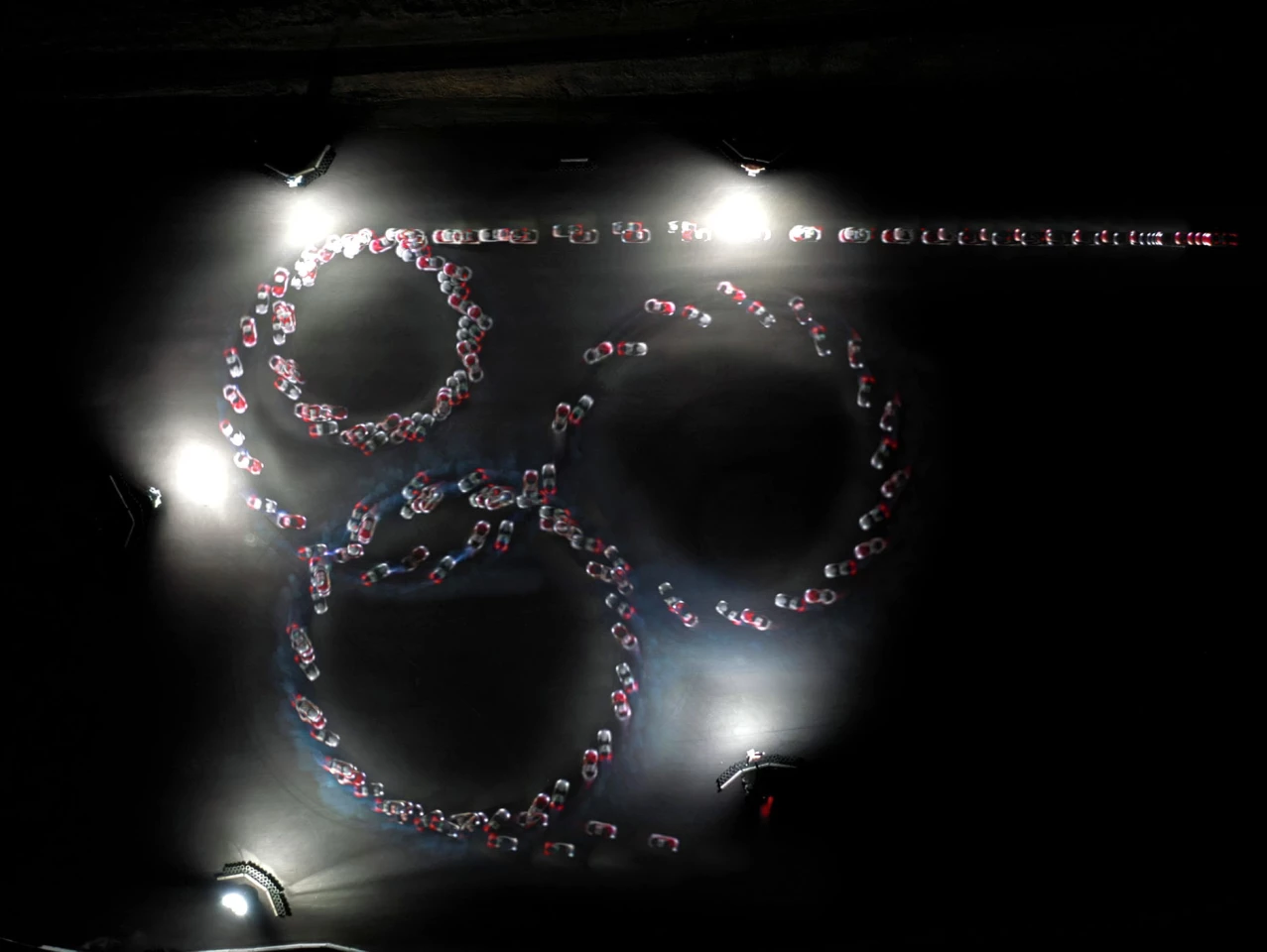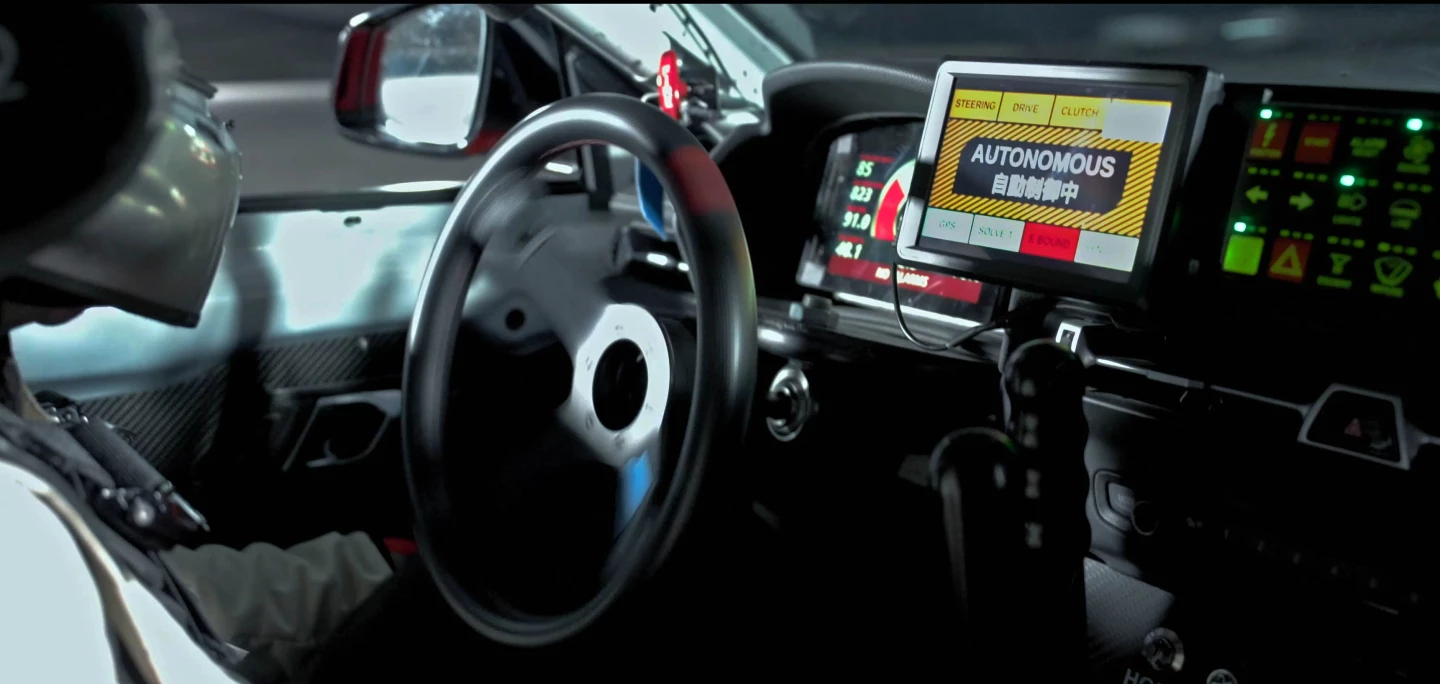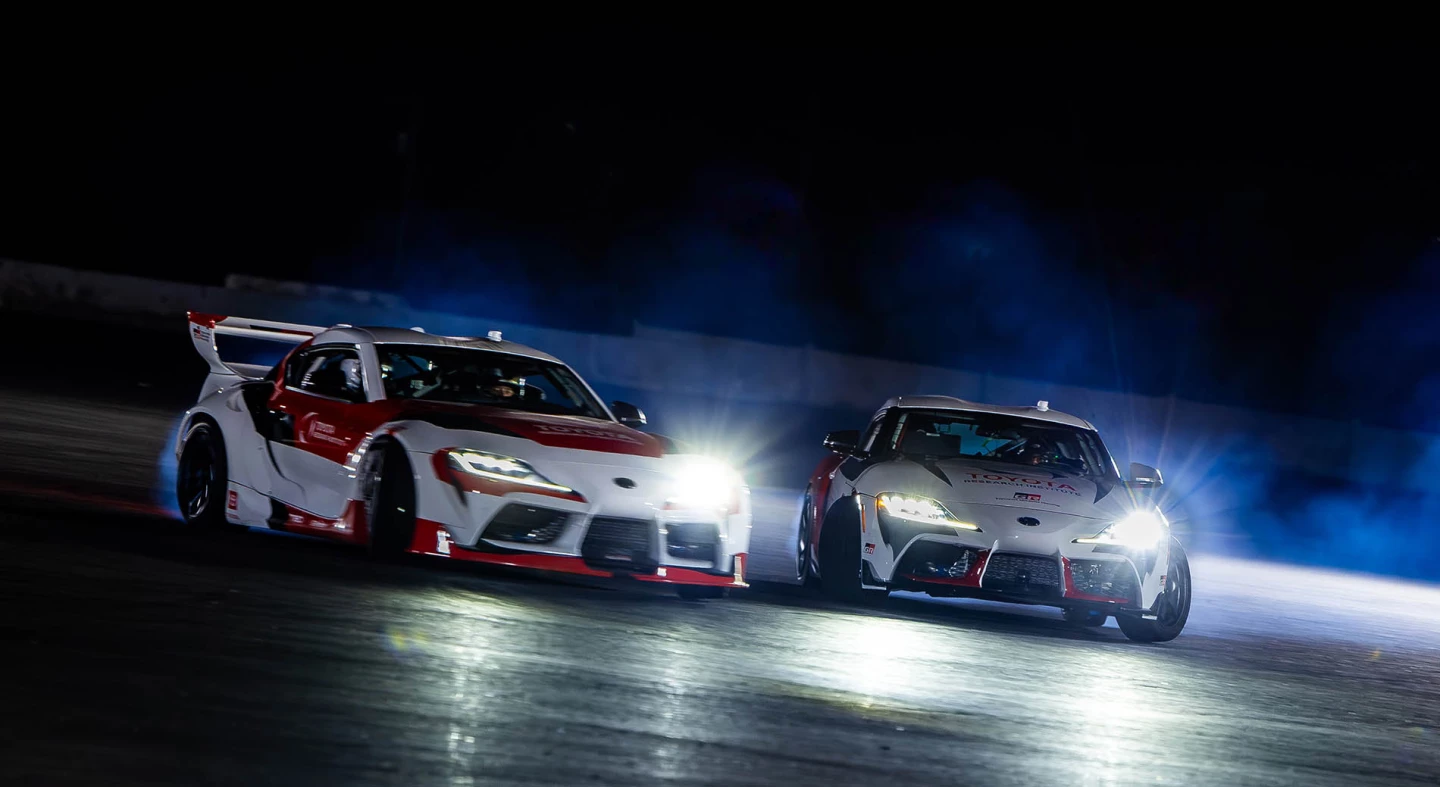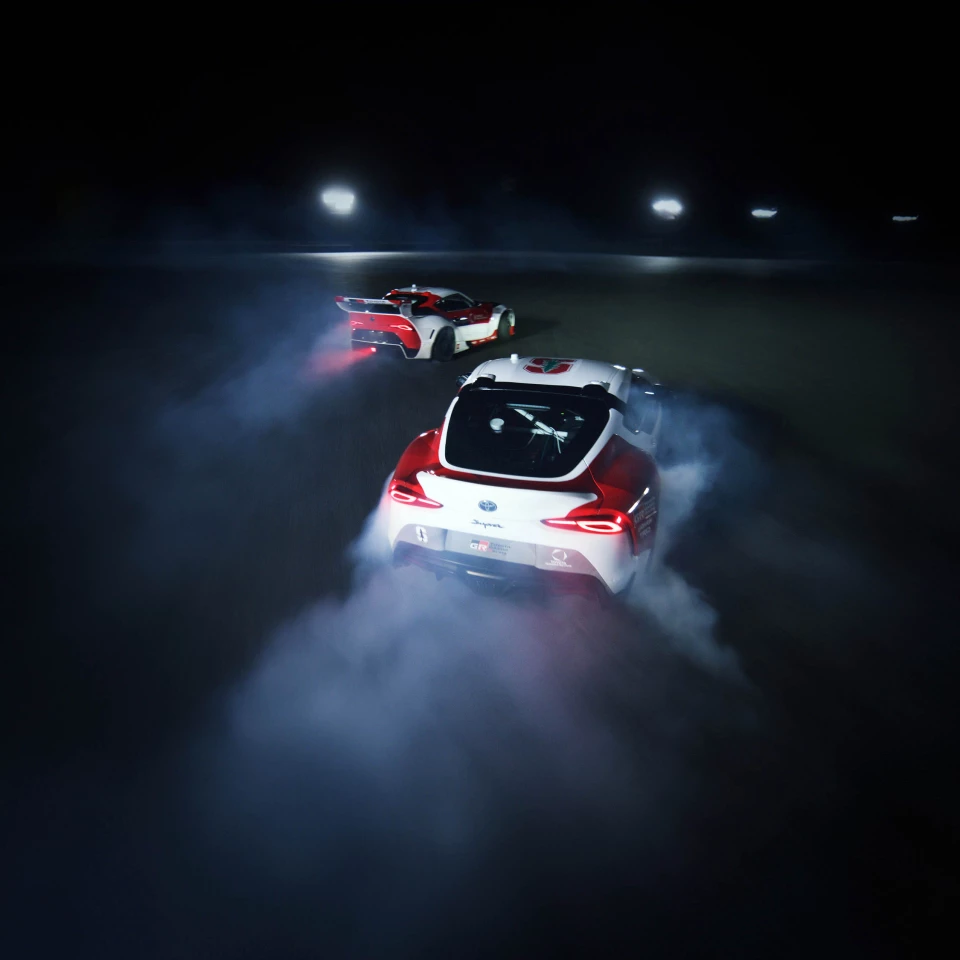Toyota and Stanford University have been pushing self-driving technology beyond the limits of traction for several years now, and they've now released video of two autonomous cars drifting in tandem, getting very sideways with extreme precision.
Drifting as a form of motorsport has been around for some time. Most, if not all drift cars these days are rear-wheel drive cars with a lot of horsepower and stiff suspension. Generally, the steering knuckles have been modified for much sharper turning than a stock vehicle, in order to get more sideways without spinning out at opposite lock.
The two-wheel drift style that we now know as D1 competition was popularized in the 1970s when "Drift King" Keiichi Tsuchiya would practice his sideways technique in the mountain passes of Japan. By the late 80's, it started becoming more mainstream. One of the very first international drift events outside of Japan was in 1996, hosted at Willow Springs in southern California.

The sport involves intentionally pitching a car sideways (oversteer) into and through turns using a hand brake to the rear calipers or using clutch modulation – all while spinning the rear tires with controlled throttle inputs. In competition, drivers are judged on how fast, how sideways, and how much tire smoke they can produce... And basically how cool it looks while drifting through a set of corners.
Tandem drifting two cars is the same – with the added danger of the chase car trying to maintain the same amount of slip angle as the lead car as closely as possible without colliding into the lead car. Sometimes they're just millimeters away from touching, and frequently paint does get swapped in the heat of the moment.
This week, Toyota and Stanford University unveiled their latest achievement: the world's first tandem autonomous drifting cars. This incredible achievement comes after nearly seven years of collaborative research and development between the two organizations.

The significance of this breakthrough goes far beyond its undeniable wow factor. Drifting closely mimics the challenges of driving on slippery surfaces like snow or ice. By introducing a second vehicle that must precisely interpret and react to the lead car's movements, Toyota and Stanford have created a testbed for dynamic scenarios.
This setup simulates real-world conditions where autonomous vehicles will need to respond to unpredictable elements such as pedestrians, other vehicles, and sudden obstacles, and it has the potential to revolutionize the safety and adaptability of self-driving technology. Effectively, the idea is to make autonomous cars as comfortable beyond the limits of traction as skilled human drift racers, so they've got elite-level chops to swerve, correct and control themselves in dangerous and slippery conditions.
Northern California's Thunderhill Raceway Park provided an excellent testing and proving ground for such a project.

"The physics of drifting are actually similar to what a car might experience on snow or ice. What we have learned from this autonomous drifting project has already led to new techniques for controlling automated vehicles safely on ice," said Chris Gerdes, co-director of the Center for Automotive Research at Stanford and professor of mechanical engineering.
This isn't the first time Stanford has developed an autonomous drift car. In 2015, they had a fully functioning autonomous drift car made from a DeLorean that was converted to an electric drivetrain, sadly without a flux capacitor. I saw that machine on track maybe a dozen times, from its first day on the skid pad, where it sat stationary most of the day with coders huddled around it, to the point where it could confidently rock autonomous donuts like a second-week Mustang owner.
Nearly two and a half years ago, Toyota had the Supra drifting corners at Thunderhill Raceway West course. Combining the forces of Stanford and the Toyota Research Institute (TRI) has taken things to an entirely new level of technical sophistication.
"Our researchers came together with one goal in mind: how to make driving safer," said Avinash Balachandran, vice president of TRI's Human Interactive Driving division. "When your car begins to skid or slide, you rely solely on your driving skills to avoid colliding with another vehicle, tree, or obstacle. An average driver struggles to manage these extreme circumstances, and a split second can mean the difference between life and death. This new technology can kick in precisely in time to safeguard a driver and manage a loss of control, just as an expert drifter would."

It's worth noting that while both vehicles are similarly modified Toyota GR Supras, the lead Supra was programmed by the developers at TRI to be stable and repeatable in order to lead safe runs.
The chase Supra's AI neural network was developed by Stanford Engineering with the focus of adapting dynamically to the lead car in order to drift alongside without crashing into it. It is able to learn and improve from every trip to the track.
Both cars were built to the same specs required in Formula Drift but with added computers and sensors to collect and share data – like relative position from each other, velocity, rotation rate, as well as planned trajectories on a dedicated WiFi network. The computers allow the vehicles to continually read and make brake, throttle, and steering adjustments up to 50 times per second, while drifting using a technique called Nonlinear Model Predictive Control (NMPC).
For many of us who spend any amount of time driving through snowy, icy, or slick conditions, perhaps a little AI nudge in the right direction might be helpful rather than a slippery slide off the road... In your car, of course. Not in mine, thanks.
Check out Toyota's video here:
Source: Toyota Research Institute













